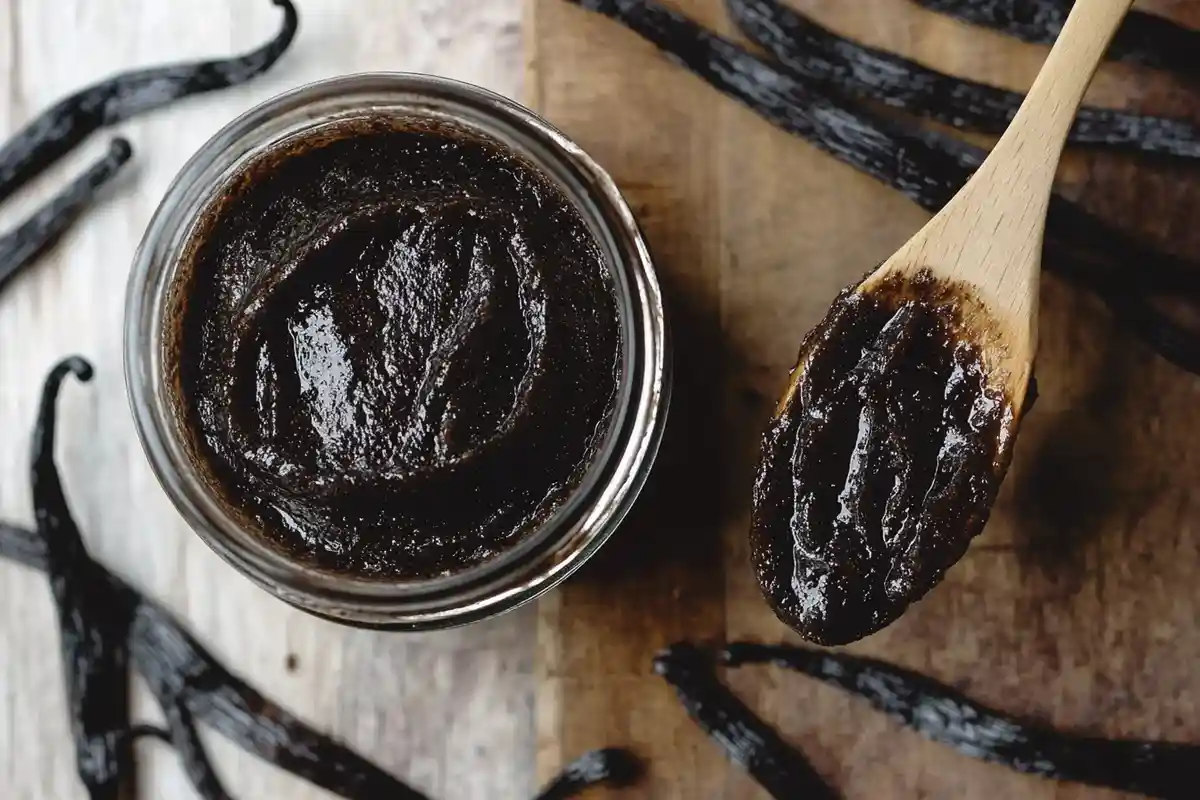Introduction to Vanilla Paste Recipe
Ah, vanilla paste! This luxurious ingredient has become a darling of professional chefs and home bakers alike. Whether you’re whisking it into silky pastry cream or folding it into a batch of homemade ice cream, vanilla paste delivers an unmatched depth of flavor and signature vanilla bean specks that scream sophistication. But what exactly is it, and why should you choose it over vanilla extract or beans? In this guide, we’ll dive deep into the world of vanilla paste, exploring its unique qualities, benefits, and versatile culinary applications.
Let’s kick things off with a closer look at what vanilla paste really is and why it deserves a spot in your pantry.
Table of Contents
What Is Vanilla Paste?
Definition and Characteristics
Vanilla paste is a thick, syrup-like blend of concentrated vanilla extract, vanilla bean seeds, and a natural thickening agent like gum tragacanth. Unlike vanilla extract, which is purely liquid, vanilla paste brings the best of both worlds—the bold flavor of the extract and the visual charm of vanilla bean specks.
Typically sold in small jars, vanilla paste offers an intense and aromatic flavor that’s perfect for desserts, baked goods, and even beverages. The consistency makes it easy to measure and mix into recipes, ensuring an even distribution of vanilla goodness throughout your dish.
Comparison with Vanilla Extract and Vanilla Beans
While vanilla extract is more fluid and has a milder flavor profile, vanilla paste is thicker, more decadent, and more aromatic. On the other hand, using whole vanilla beans can be cumbersome and time-consuming, not to mention expensive.
Here’s a quick comparison:
| Feature | Vanilla Paste | Vanilla Extract | Vanilla Beans |
| Flavor Intensity | Strong | Moderate | Intense |
| Ease of Use | Very Easy | Easy | Moderate |
| Appearance in Food | Vanilla Specks | Clear | Vanilla Specks |
| Shelf Life | Long | Long | Short |
So, if you’re looking for an easy-to-use, visually appealing vanilla option with a robust flavor, vanilla paste is your best bet!
Why Use Vanilla Paste in Recipes?
Flavor Intensity and Visual Appeal
One of the standout reasons to use vanilla paste is its flavor intensity. It packs a punch that’s far richer than your typical vanilla extract. Plus, those beautiful vanilla bean specks add a gourmet touch to everything from crème brûlée to pound cakes.
Imagine serving a dessert where every spoonful has visible flecks of real vanilla—it instantly elevates both the taste and the presentation.
Convenience in Baking and Cooking
Unlike vanilla beans, which require splitting and scraping, vanilla paste comes ready to use. Just spoon out the required amount, and you’re good to go. No fuss, no mess!
It’s also more consistent in flavor than vanilla beans, ensuring that every dish turns out just right.
Culinary Applications of Vanilla Paste
Suitable Recipes and Dishes
The versatility of vanilla paste is one of its biggest strengths. You can use it in:
- Baked goods like cakes, cookies, and brownies
- Cream-based desserts such as custards and panna cotta
- Ice creams and gelatos
- Beverages like coffee, lattes, and milkshakes
The possibilities are endless!
Advantages Over Other Vanilla Products
Compared to vanilla extract, vanilla paste holds its flavor better in high-heat recipes. Unlike whole beans, it doesn’t require additional prep time.
Moreover, vanilla paste allows for precise measurements. When a recipe calls for a teaspoon of vanilla, you can confidently use paste without worrying about over- or under-flavoring your dish.
To understand the differences between vanilla paste and vanilla extract, check out this resource: Vanilla Paste vs. Vanilla Extract: What’s the Difference?
How to Make Homemade Vanilla Paste
Crafting your vanilla paste Recipe at home isn’t just satisfying—it’s also an excellent way to ensure premium quality and complete control over flavor intensity. With the right ingredients and techniques, you’ll create a vanilla paste that surpasses any store-bought version. Ready to dive in? Let’s break it down step by step.
Ingredients Needed
Vanilla Beans: Types and Selection
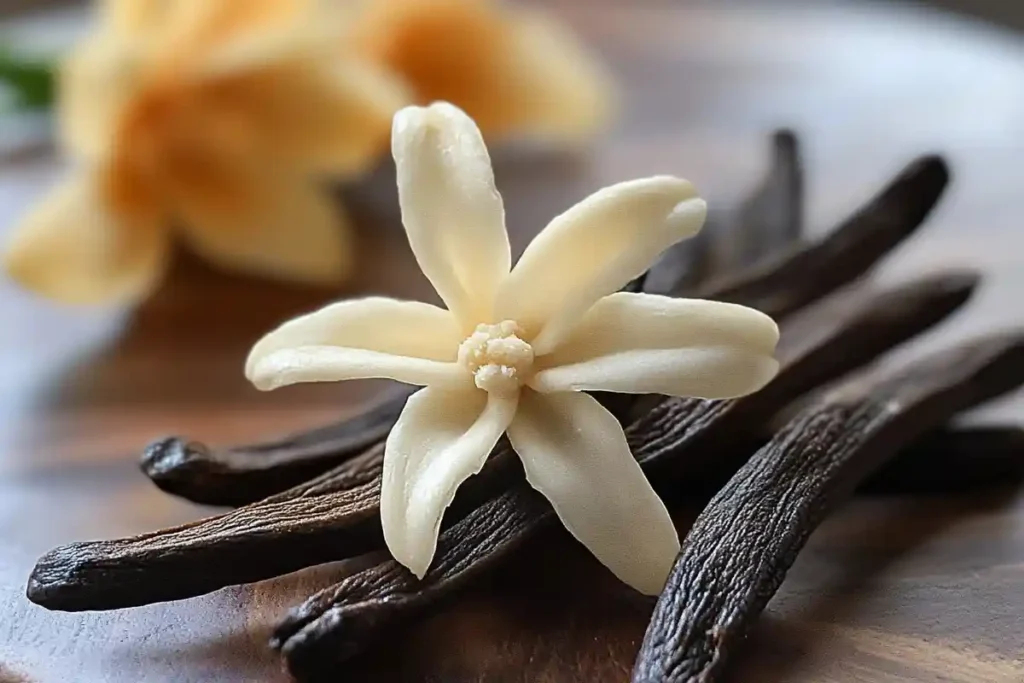
The foundation of any excellent vanilla paste lies in the vanilla beans. But not all beans are created equal!
- Madagascar Vanilla Beans: Known for their creamy, sweet, and classic vanilla flavor.
- Tahitian Vanilla Beans: Fruity and floral notes, perfect for cold desserts like ice cream.
- Mexican Vanilla Beans: Rich, spicy, and bold flavor—ideal for baked goods.
When selecting beans, look for ones that are plump, oily, and have a strong aroma. Dry or brittle beans are a no-go since they lack essential oils that contribute to flavor.
Sweeteners: Options and Considerations
Sweeteners not only enhance the flavor but also contribute to the smooth consistency of vanilla paste.
- Granulated Sugar: Common and easy to use, but may crystallize over time.
- Honey: Adds a floral undertone but can slightly alter the paste’s flavor.
- Agave Syrup: A vegan-friendly option with a neutral taste.
For best results, use a sweetener that complements the vanilla’s natural profile.
Optional Additives: Preservatives and Thickeners
To improve shelf life and consistency, consider these optional additives:
- Gum Tragacanth: A natural thickener commonly used in commercial vanilla paste.
- Corn Syrup: Helps maintain a smooth texture.
- Vodka or Food-Grade Alcohol: Acts as a preservative to extend shelf life.
While these aren’t mandatory, they do enhance the final product’s stability.
Step-by-Step Preparation Guide
Preparing the Vanilla Beans
Start by selecting 5–7 high-quality vanilla beans. Using a sharp knife, carefully split each bean lengthwise and scrape out the tiny black seeds. Don’t toss the pods—they still hold plenty of flavor!
Creating the Vanilla Infusion
In a saucepan, combine the scraped vanilla seeds, pods, sweetener of your choice, and a splash of water or food-grade alcohol. Gently heat the mixture over low heat, stirring frequently.
The goal is to extract every last drop of flavor without boiling the mixture, which could degrade the vanilla’s delicate aroma.
Blending and Achieving Desired Consistency
Once the infusion has cooled slightly, transfer the mixture to a high-powered blender. Blend until smooth and paste-like. If the texture seems too runny, you can add a natural thickener like gum tragacanth or a small amount of cornstarch.
The ideal vanilla paste should have a thick, glossy consistency—spoonable but not overly runny.
Storing the Finished Vanilla Paste
Pour your freshly made vanilla paste into a sterilized glass jar. Make sure to seal it tightly.
- Store in a cool, dark place like a pantry.
- For longer shelf life, refrigerate the paste.
Pro Tip: Label your jar with the date of preparation to track freshness.
Tips for Success Vanilla Paste Recipe
Selecting High-Quality Vanilla Beans
Investing in premium-quality beans is non-negotiable. Cheaper alternatives often result in diluted flavor and poor consistency.
If possible, source your beans from reputable suppliers specializing in gourmet vanilla.
Adjusting Sweetness and Thickness
Taste as you go! If the paste feels too sweet or too thick, adjust with a small amount of water or alcohol. Finding the right balance is key.
For a thinner paste, add a teaspoon of water at a time. To thicken, blend in small amounts of natural thickeners.
Shelf Life and Storage Recommendations
Proper storage makes all the difference. Homemade vanilla paste can last up to 6 months in the refrigerator.
To ensure longevity:
- Keep the jar tightly sealed.
- Always use a clean, dry spoon when scooping out paste.
- If you notice mold, discoloration, or an off smell, discard it immediately.
Explore homemade fermentation techniques like sourdough starter.
Using Vanilla Paste in Recipe
When it comes to culinary versatility, vanilla paste is a superstar. Its rich flavor, aromatic profile, and beautiful vanilla specks make it a must-have in both professional and home kitchens. But how do you substitute it for other vanilla products, and what recipes truly shine with this ingredient? Let’s dive into the delicious details.
Substituting Vanilla Paste for Other Vanilla Products
Conversion Ratios and Guidelines
One of the most significant advantages of vanilla paste is how easily it can replace vanilla extract or vanilla beans. However, getting the ratios right is crucial to maintaining the intended flavor profile.
- Vanilla Paste to Vanilla Extract: Use one teaspoon of vanilla paste for every one teaspoon of vanilla extract.
- Vanilla Paste to Vanilla Beans: 1 tablespoon of vanilla paste is roughly equivalent to 1 whole vanilla bean.
These ratios ensure that your recipe stays balanced without overpowering or underwhelming the taste buds.
Impact on Flavor and Appearance
Flavor-wise, vanilla paste provides a bolder and more aromatic punch compared to vanilla extract. And then there are those tiny vanilla bean specks! They add an artisanal charm to desserts, making dishes not just taste but also look extraordinary.
For recipes where visual appeal matters, think of custards, creams, and light-colored cakes; vanilla paste is the clear winner.
Recipe Ideas Featuring Vanilla Paste
Vanilla Bean Pastry Cream
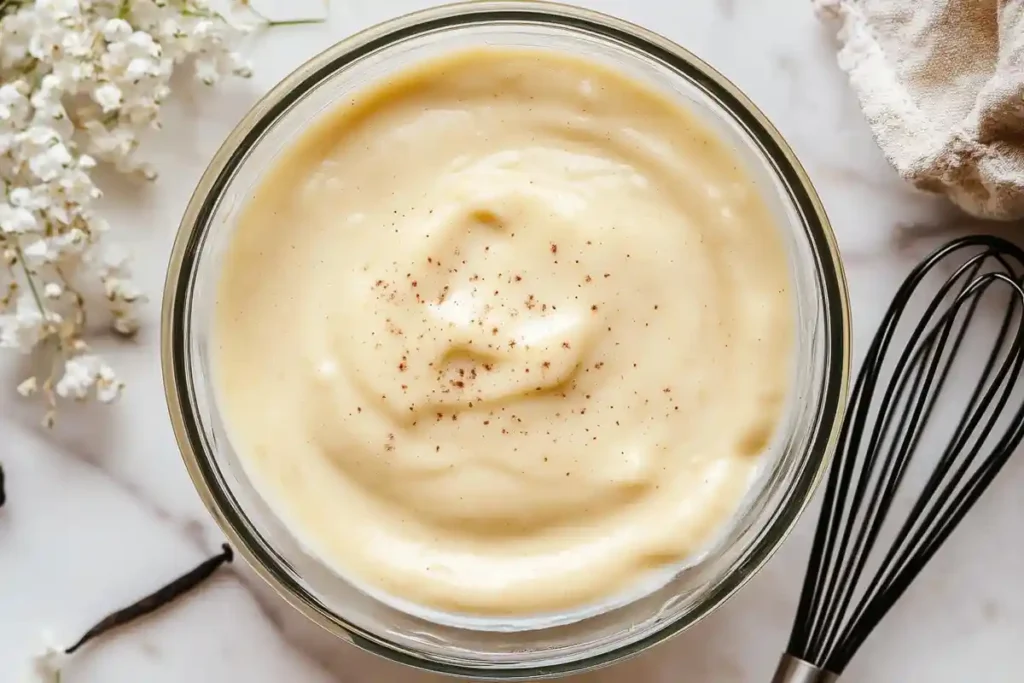
Pastry cream is a classic, and using vanilla paste takes it to gourmet levels. The thick, creamy custard infused with vanilla paste creates a silky texture, punctuated by those signature black specks.
- Use it in tarts, éclairs, or as a cake filling.
Pro Tip: Add the vanilla paste towards the end of cooking to preserve its aromatic notes.
Homemade Vanilla Ice Cream
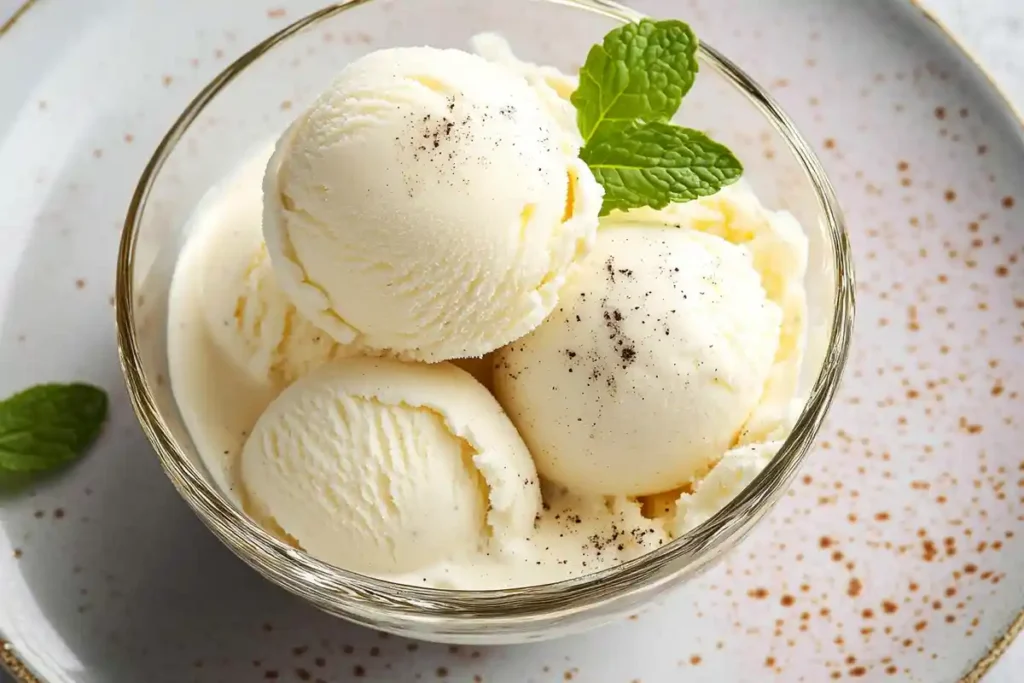
If you’ve never tried homemade vanilla ice cream made with vanilla paste, you’re in for a treat! The paste blends seamlessly into the custard base, delivering a deep, luxurious flavor.
- Serve it plain, or top it with fresh fruits and nuts.
Pro Tip: Chill your ice cream mixture thoroughly before churning for the creamiest texture.
Vanilla-Scented Baked Goods
From cakes and cookies to muffins and scones, vanilla paste shines in baked goods. It holds up well to heat, retaining its robust flavor even after baking.
- Try it in pound cake, shortbread cookies, or a simple vanilla sponge.
Pro Tip: Use a bit extra vanilla paste in lighter, less complex desserts to make the flavor truly stand out.
Enhancing Desserts with Vanilla Paste
Visual Appeal of Vanilla Specks
One of the most considerable charms of vanilla paste is its ability to leave visible vanilla bean specks in desserts. Whether in creamy panna cotta, custards, or even frostings, these tiny black flecks scream quality and attention to detail.
- A dessert with specks looks instantly more luxurious and handmade.
Elevating Flavor Profiles in Sweets
Vanilla paste doesn’t just add vanilla flavor—it enhances other flavors as well. Pair it with:
- Chocolate desserts for added depth.
- Fruit-based dishes to balance sweetness.
- Caramel sauces for a gourmet touch.
Its versatility makes it a go-to for both sweet and subtly savory applications.
Frequently Asked Questions About Vanilla Paste
When it comes to vanilla paste recipe, curiosity often bubbles up in the kitchen. From understanding its differences with vanilla extract to learning how to store it properly, we’ve gathered the most commonly asked questions to help you make the most of this flavor-packed ingredient.
What Is the Difference Between Vanilla Paste and Vanilla Extract?
While both vanilla paste and vanilla extract deliver that unmistakable vanilla flavor, they differ in consistency, intensity, and appearance.
- Vanilla Paste: Thick, syrup-like, with visible vanilla bean specks. Offers a more robust flavor and is perfect for desserts where appearance matters.
- Vanilla Extract: A thin, liquid form without specks. Best for recipes where vanilla’s flavor is essential, but its appearance isn’t.
In short, vanilla paste adds both flavor and visual appeal, while vanilla extract offers convenience for quick mixes.
Can I Substitute Vanilla Paste for Vanilla Beans in Recipes?
Absolutely! Vanilla paste is an excellent substitute for vanilla beans.
- 1 tablespoon of vanilla paste ≈ , one vanilla bean
Not only does it save time, but it also ensures consistent flavor without the hassle of scraping out beans.
How Should I Store Homemade Vanilla Paste?
Proper storage is key to preserving the flavor and freshness of your vanilla paste.
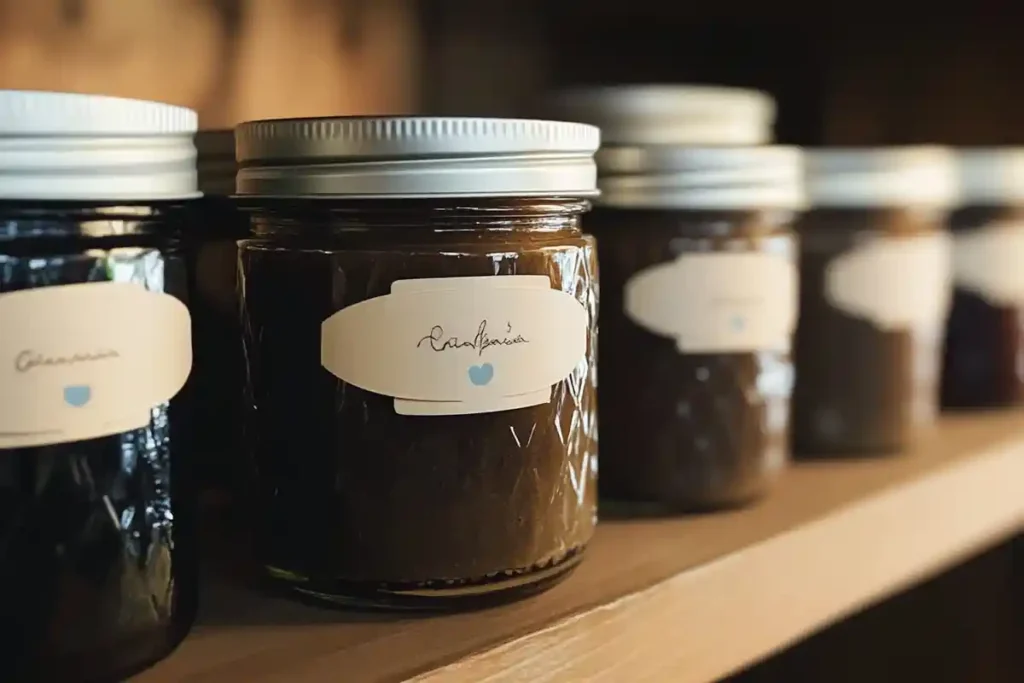
- Store in an airtight glass jar.
- Please keep it in a cool, dark place (like a pantry).
- For extended shelf life, refrigerate it.
Always use a clean, dry spoon to prevent contamination.
Is Vanilla Paste Suitable for All Types of Recipes?
Yes, vanilla paste is incredibly versatile! You can use it in:
- Baked goods (cakes, muffins, cookies)
- Custards and creams
- Ice creams and gelatos
- Beverages (coffee, lattes, cocktails)
However, it’s best used in dishes where vanilla’s flavor and vanilla specks can shine.
Where Can I Purchase High-Quality Vanilla Beans?
High-quality vanilla beans are available from:
- Specialty baking supply stores
- Online gourmet ingredient retailers
- Farmers’ markets in regions where vanilla is cultivated
Look for beans that are plump, moist, and fragrant.
For a detailed guide on sourcing premium vanilla beans, check out this helpful resource: Understanding Vanilla Beans: AComplete Guide.
How Long Does Homemade Vanilla Paste Last?
When stored properly:
- At room temperature: 3–4 months
- In the refrigerator: 6–12 months
If you notice any mold, off smells, or discoloration, it’s time to discard and make a fresh batch.

